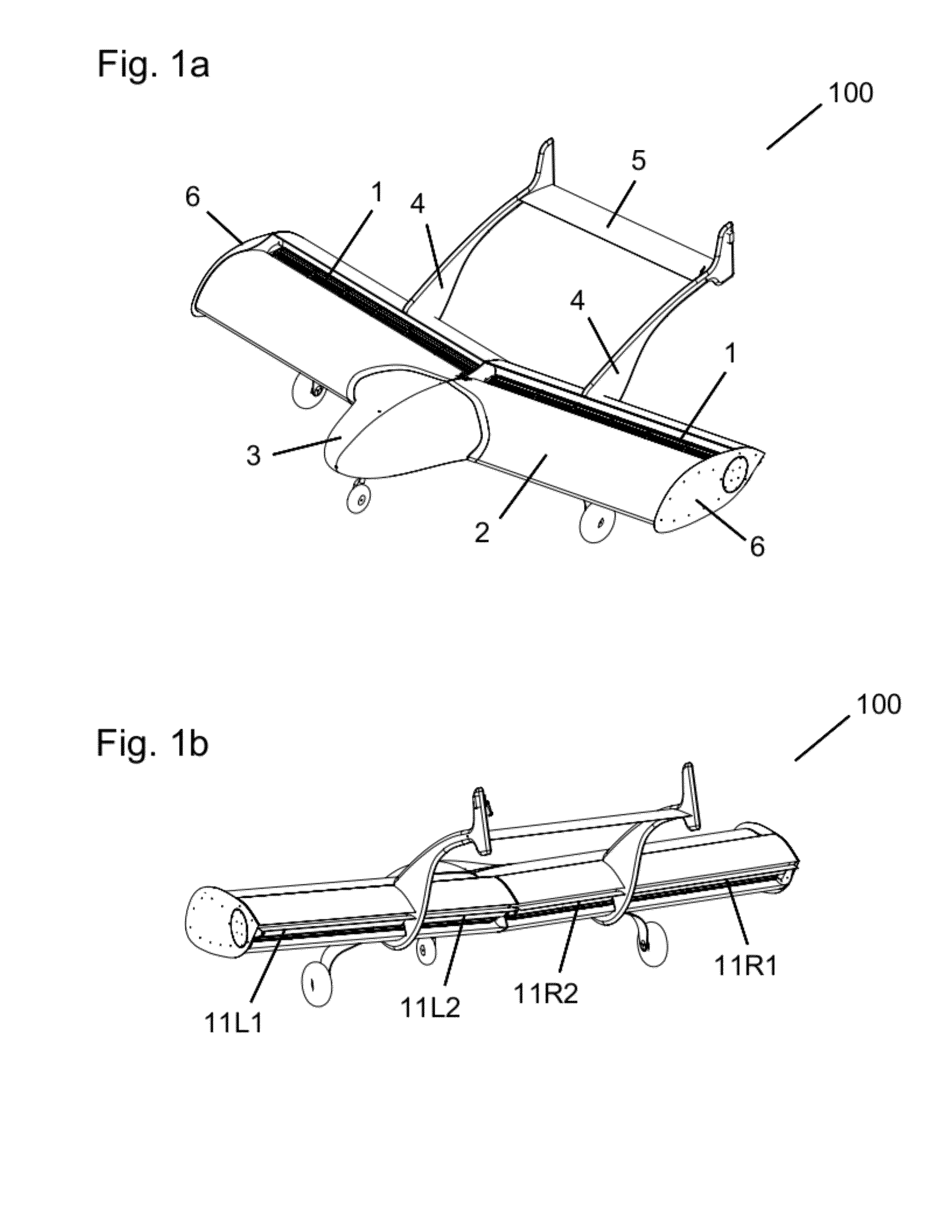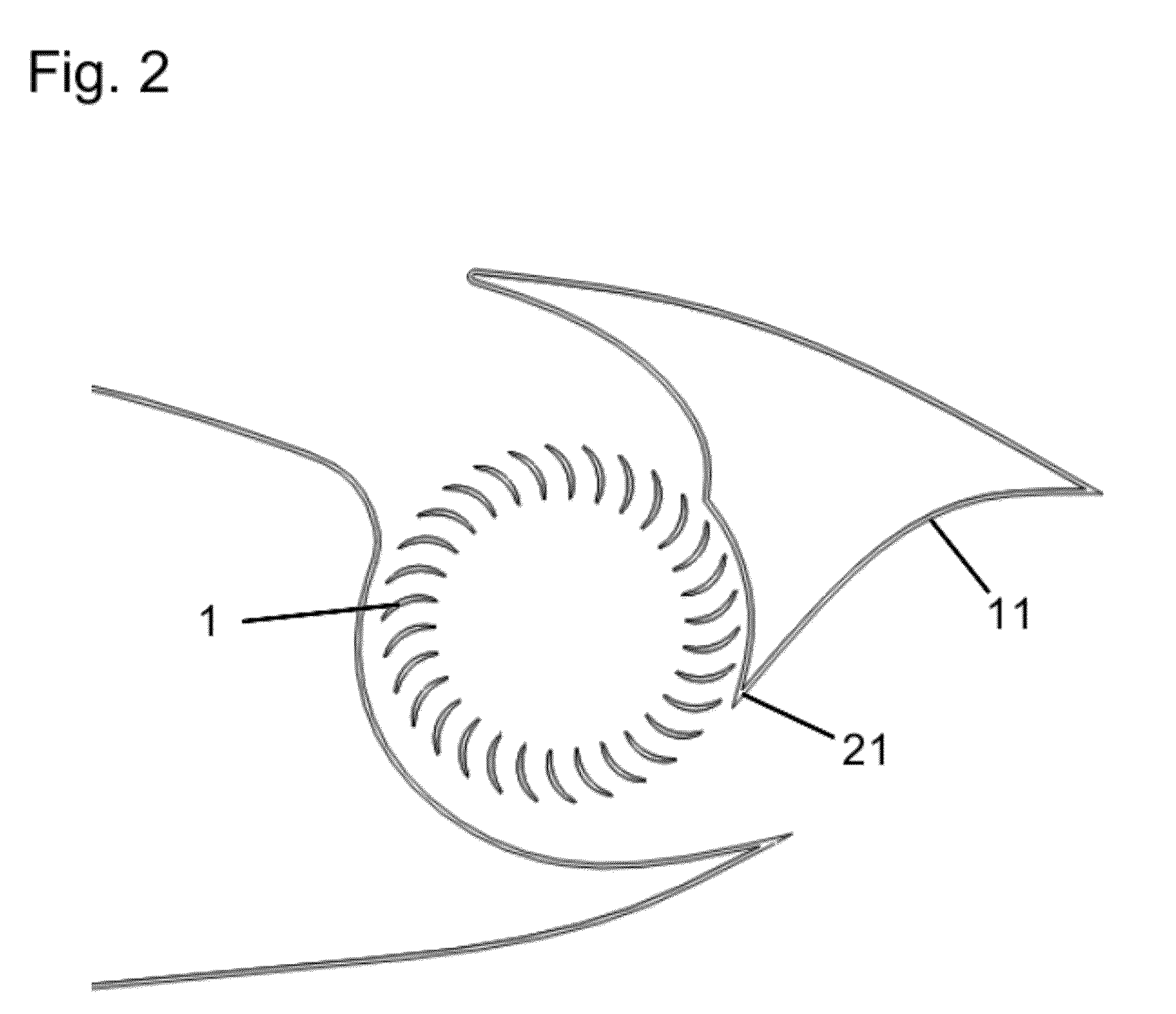Cross-flow fan propulsion system
a technology of propulsion system and fan, which is applied in the direction of wind motor with perpendicular air flow, underwater vessels, aircraft navigation control, etc., can solve the problems of limited fan size and ducting, failed to produce adequate propulsion thrust, and failed to meet the test of success, etc., to achieve cost-effective, high maneuverability, and the effect of cross-flow fan propulsion
- Summary
- Abstract
- Description
- Claims
- Application Information
AI Technical Summary
Benefits of technology
Problems solved by technology
Method used
Image
Examples
embodiment 170
[0081]As an alternative to powering one of the fans for vertical takeoff and landing, with the other shut off, FIGS. 12a and 12b show an embodiment 170 of the cross-flow fan wing system 170 where all fans 111 and 112 can remain on throughout all flight regimes. Here, the fan internal housing 122 is altered with internal baffles and / or moving walls, shown in FIGS. 12a and 12b as dotted lines 123, to properly set up the flow path through fan 112. Here, both fans 111 and 112 remain on for vertical flight and rotate in the same direction. The difference lies in that the housing geometry 122 on one side of the vehicle is dynamically adjusted to that denoted by the dotted lines 123. By doing this, the direction of the flow through the fan is reversed on the side of the plane corresponding to internal geometry 123, creating thrust in opposite directions on each side of the vehicle. The result is a large torque, and subsequent spinning of the vehicle about its center, which produces lift. O...
embodiment 750
[0092]Other embodiments 700 for driving the cross-flow fan are shown in FIGS. 24a, 24b, and 25. In FIGS. 24a and 24b, a turbine engine 243 is used, where power is shafted, through appropriate gearing, to the cross-flow fans 241 and 242. In one preferred embodiment, the turbine engine 243 is a gas turbine engine (also called a combustion engine), although alternative turbine engines could be used. This embodiment preferably uses a small gas turbine engine, and shafts power off of it to drive the fans. This would be done in a manner similar to a turbo-prop engine, where a turbine stage supplies the power to the fan. The resulting system is called a turbo cross-flow fan propulsion system. FIG. 24b shows a schematic of such a system. As an alternative to using a turbine stage to turn a drive-shaft, a turbine 243 can be used to power an electric generator, which in turn provides electric power for electric motors that are used to drive the cross-flow fans. This is an alternative to using...
PUM
| Property | Measurement | Unit |
|---|---|---|
| lift coefficients | aaaaa | aaaaa |
| thrust vectoring | aaaaa | aaaaa |
| speed | aaaaa | aaaaa |
Abstract
Description
Claims
Application Information
 Login to View More
Login to View More - R&D
- Intellectual Property
- Life Sciences
- Materials
- Tech Scout
- Unparalleled Data Quality
- Higher Quality Content
- 60% Fewer Hallucinations
Browse by: Latest US Patents, China's latest patents, Technical Efficacy Thesaurus, Application Domain, Technology Topic, Popular Technical Reports.
© 2025 PatSnap. All rights reserved.Legal|Privacy policy|Modern Slavery Act Transparency Statement|Sitemap|About US| Contact US: help@patsnap.com



